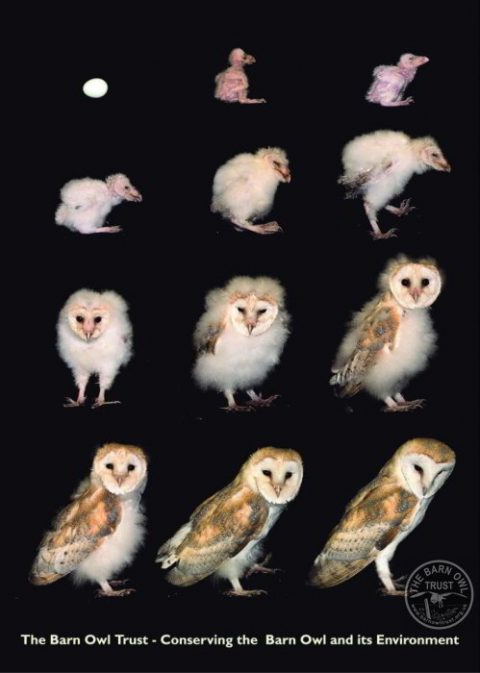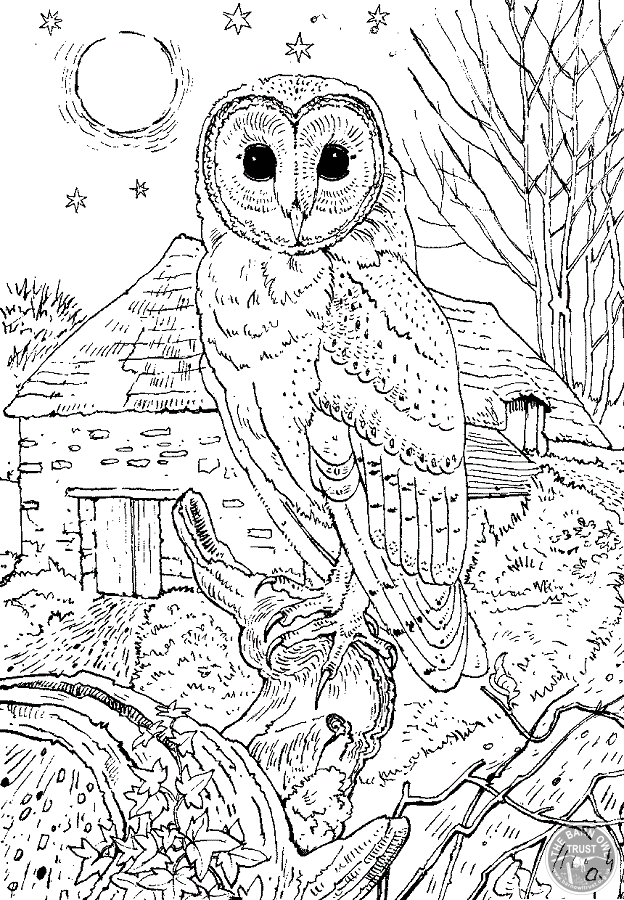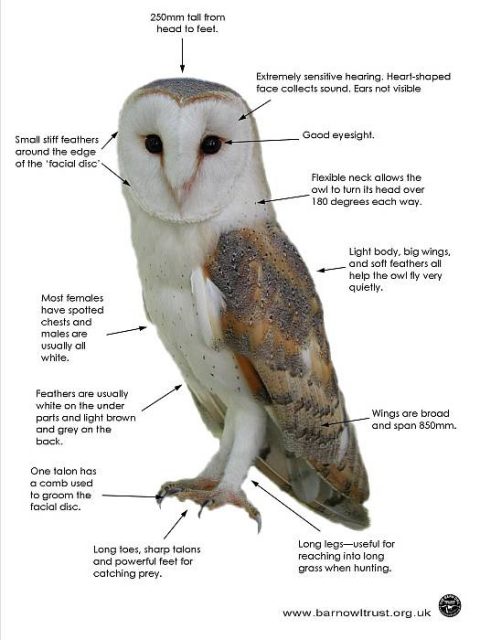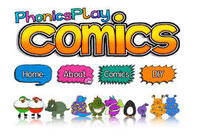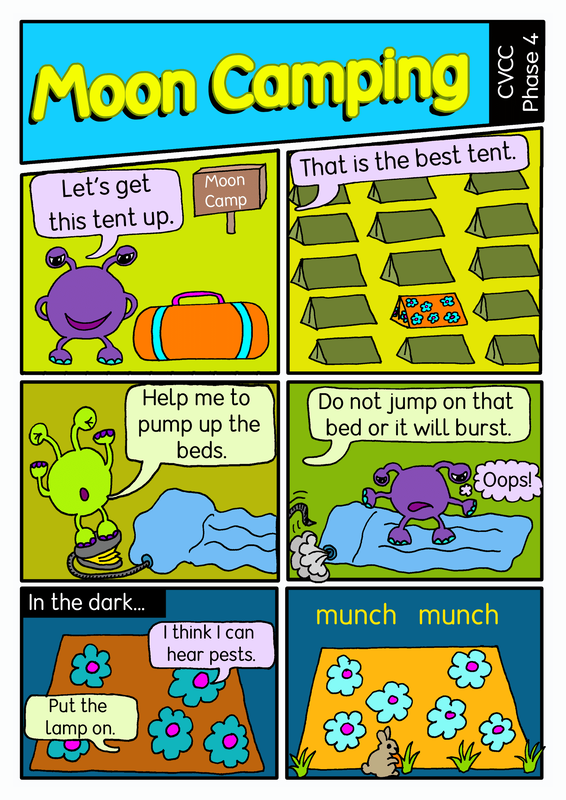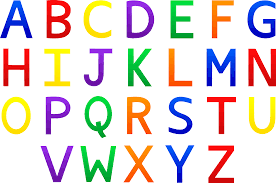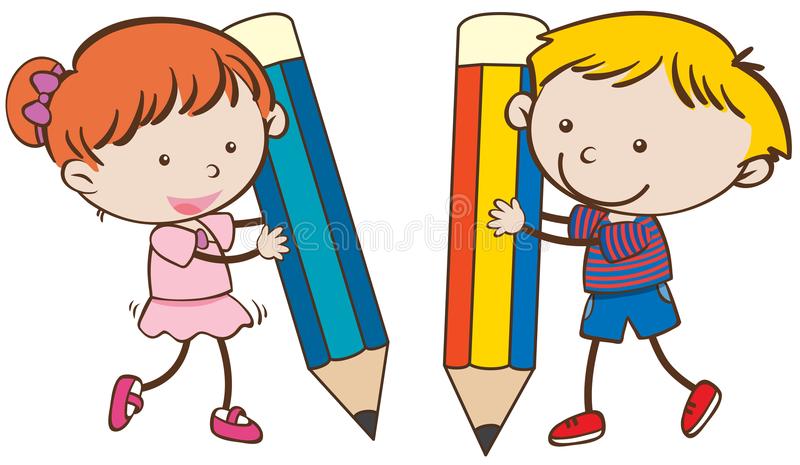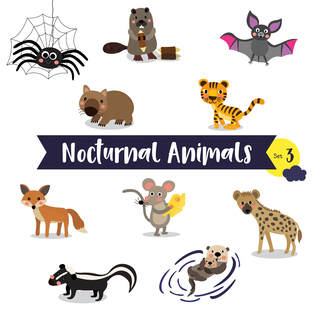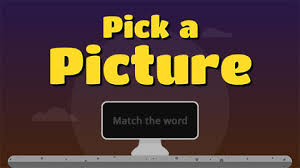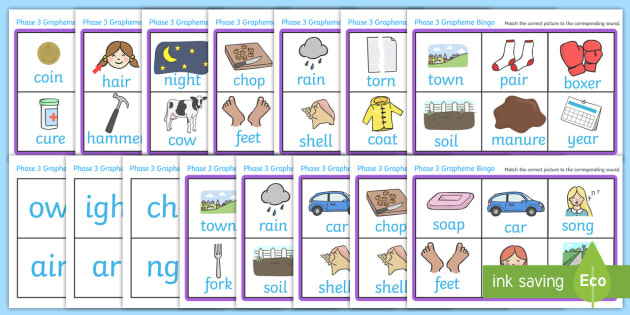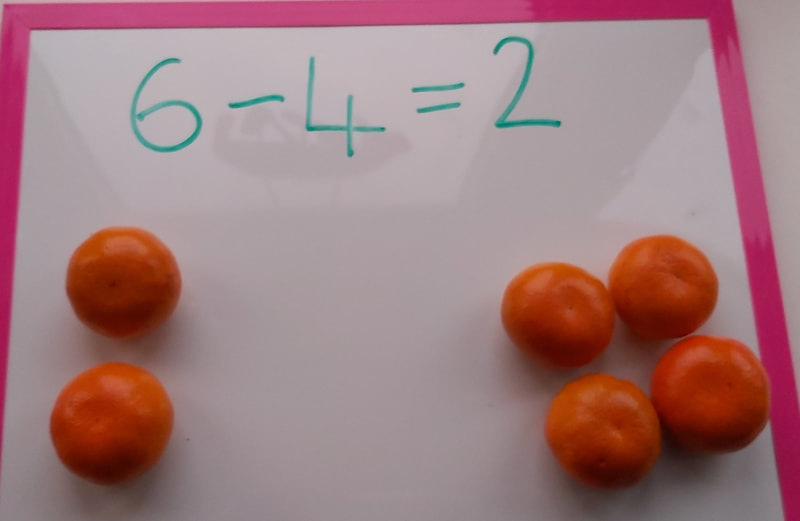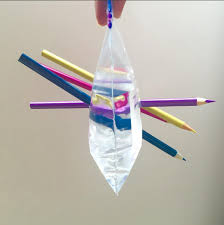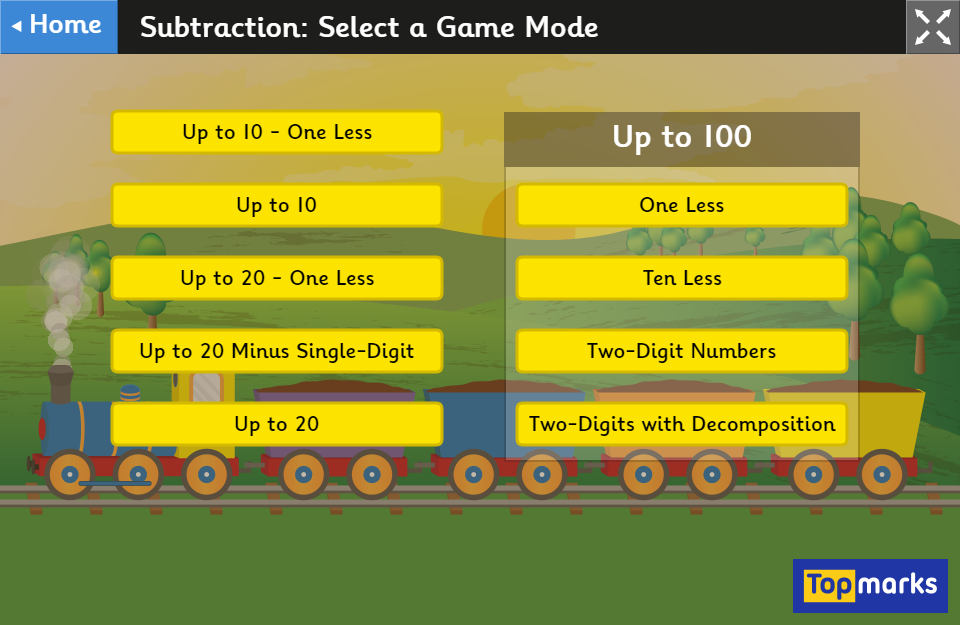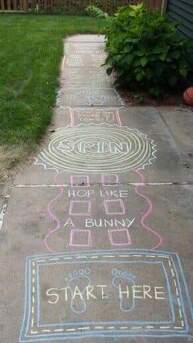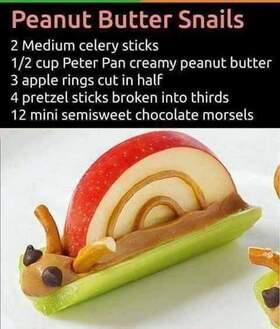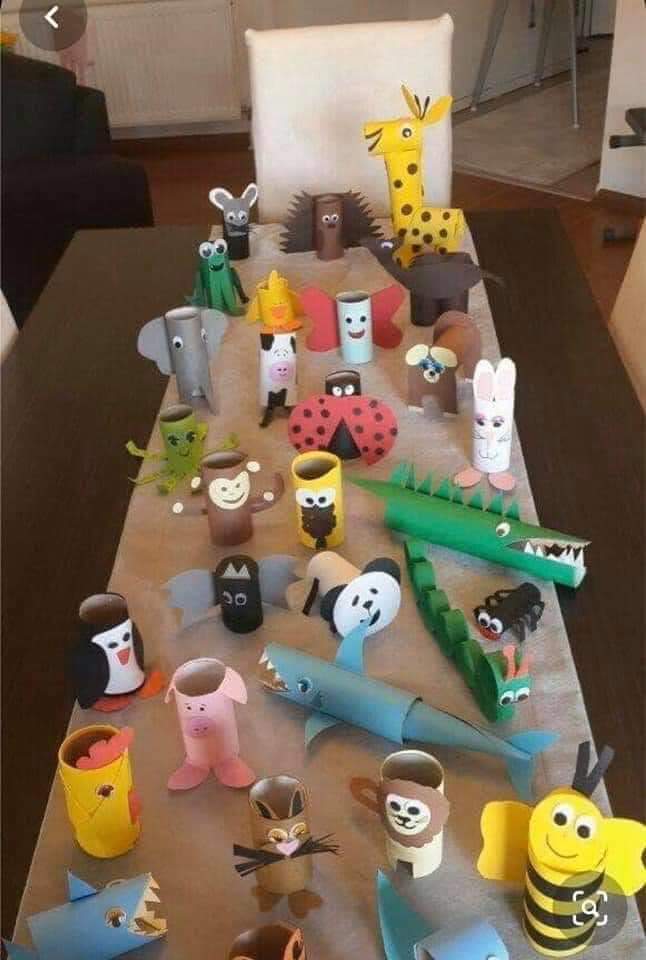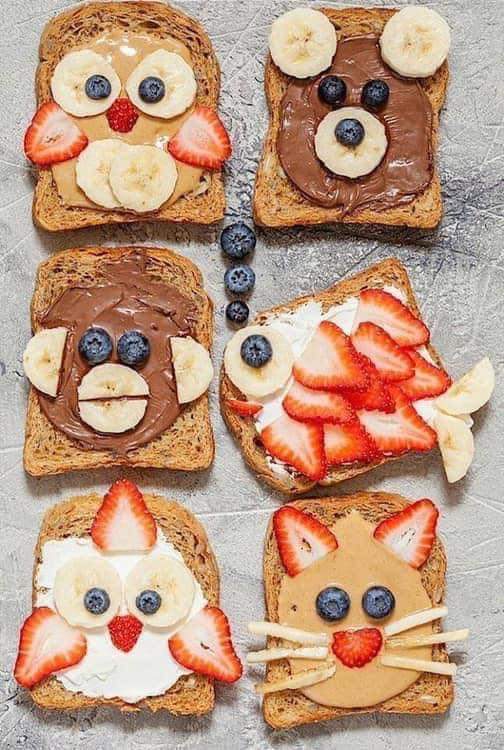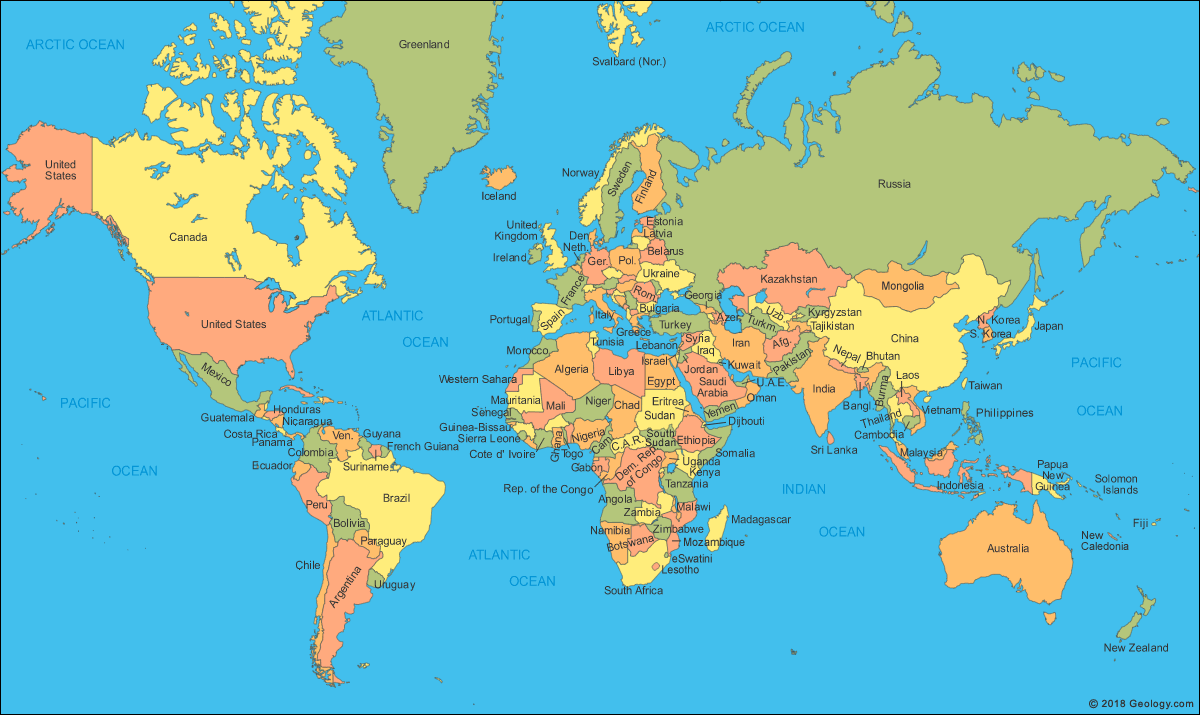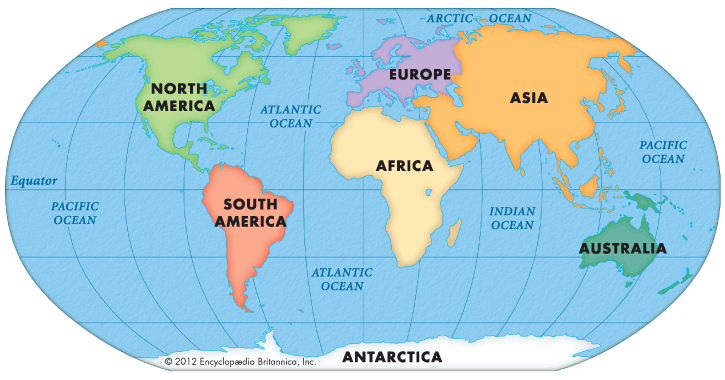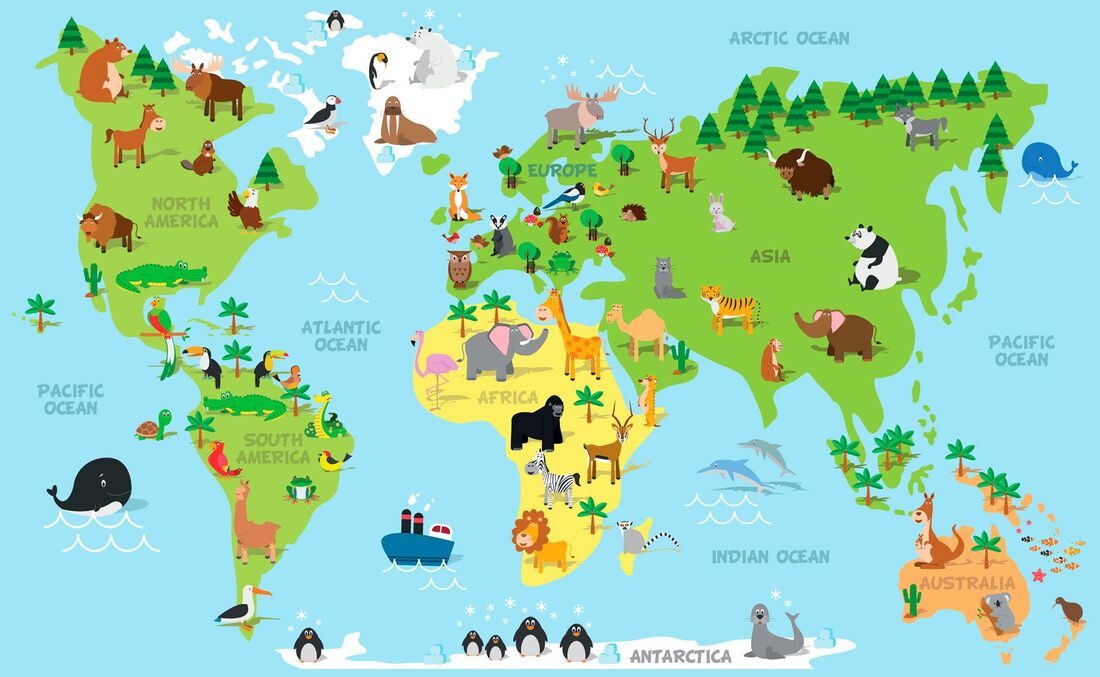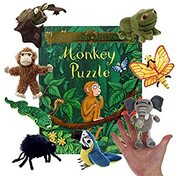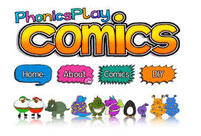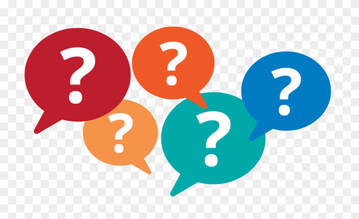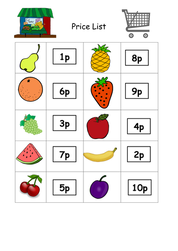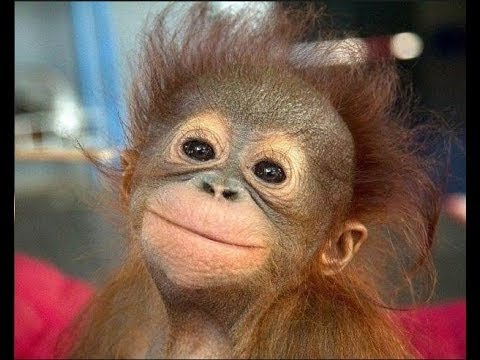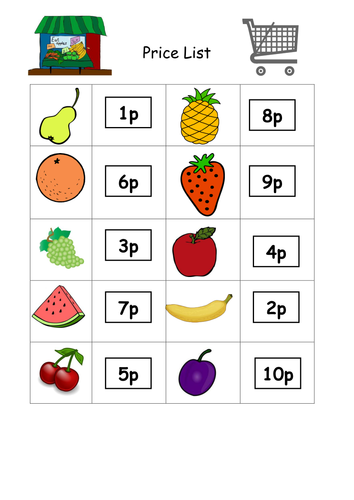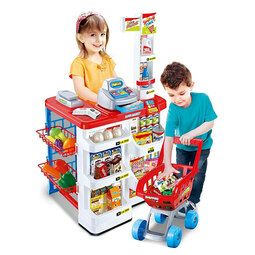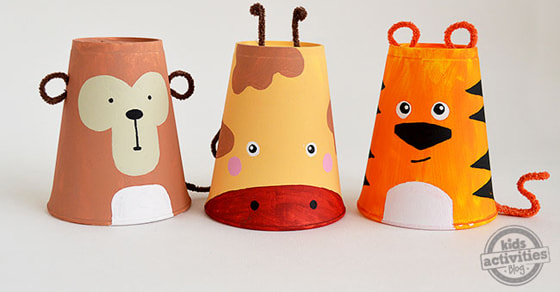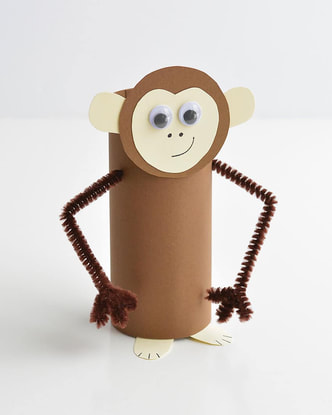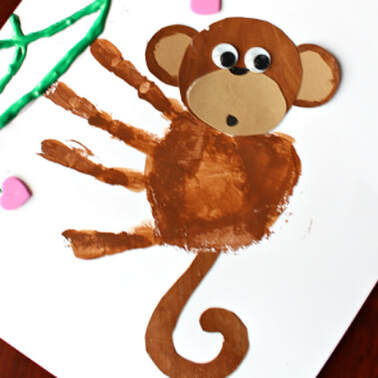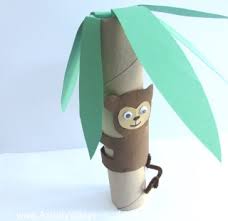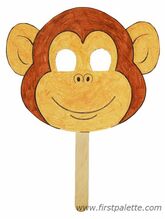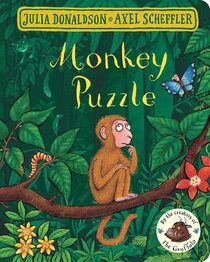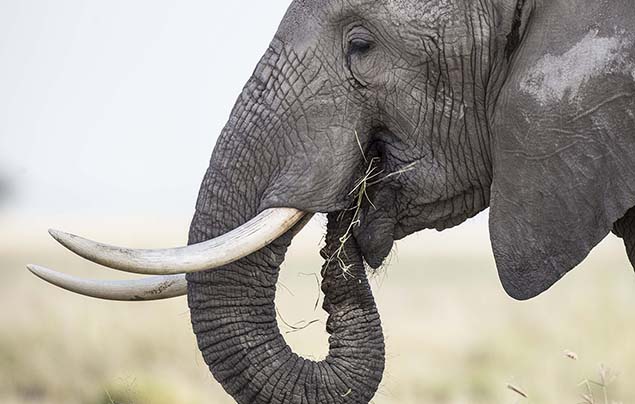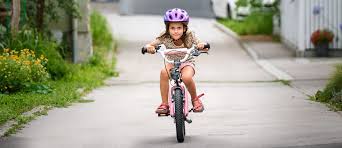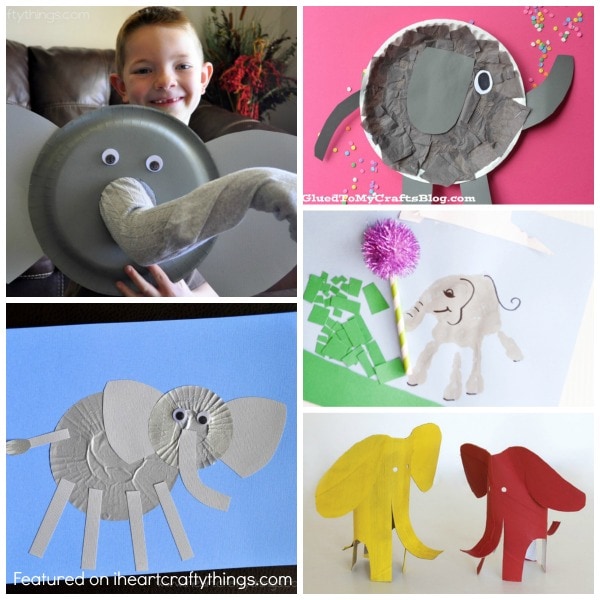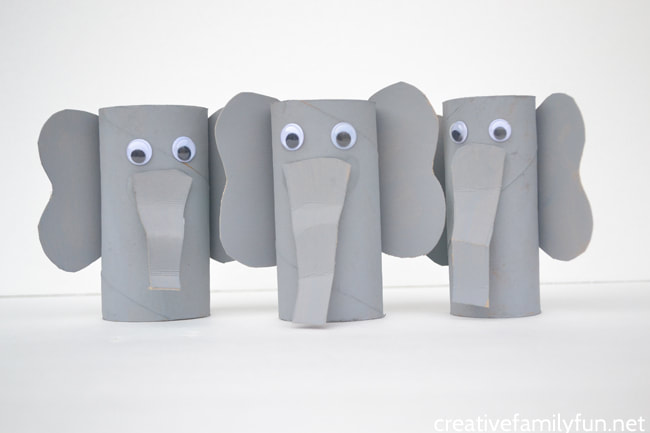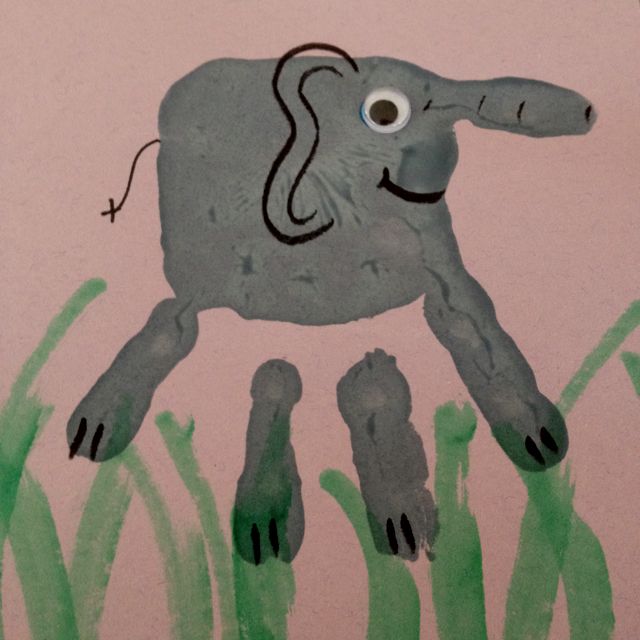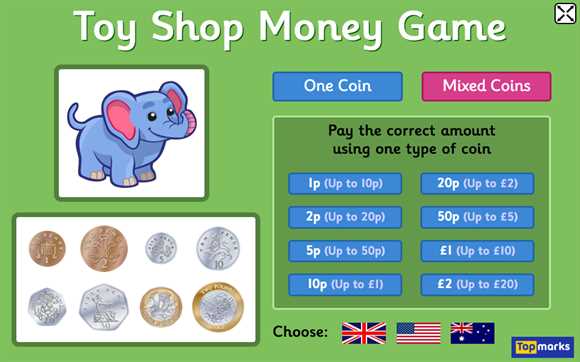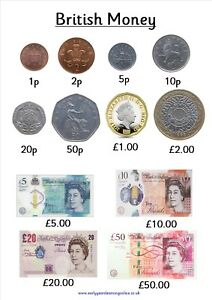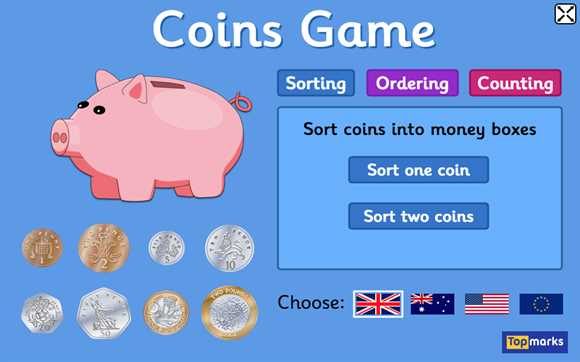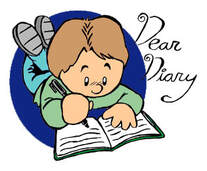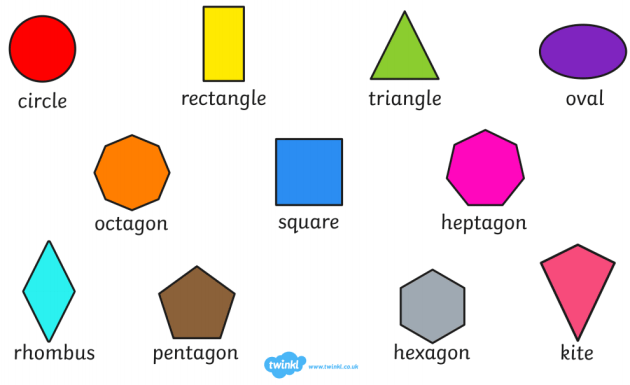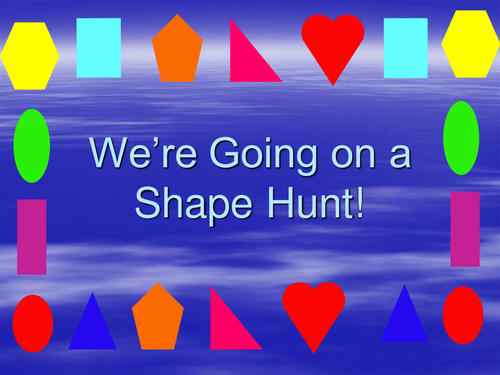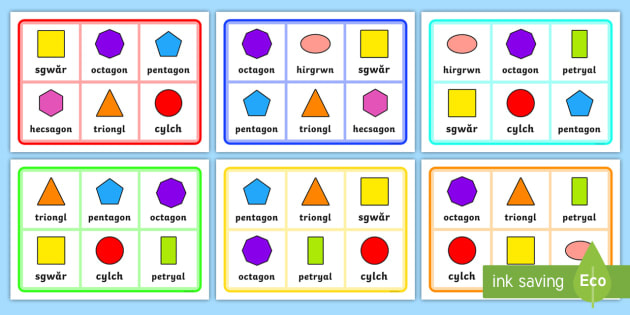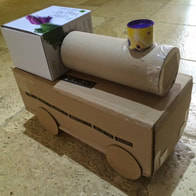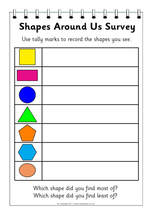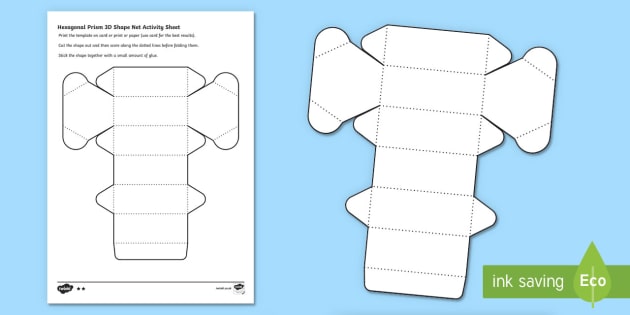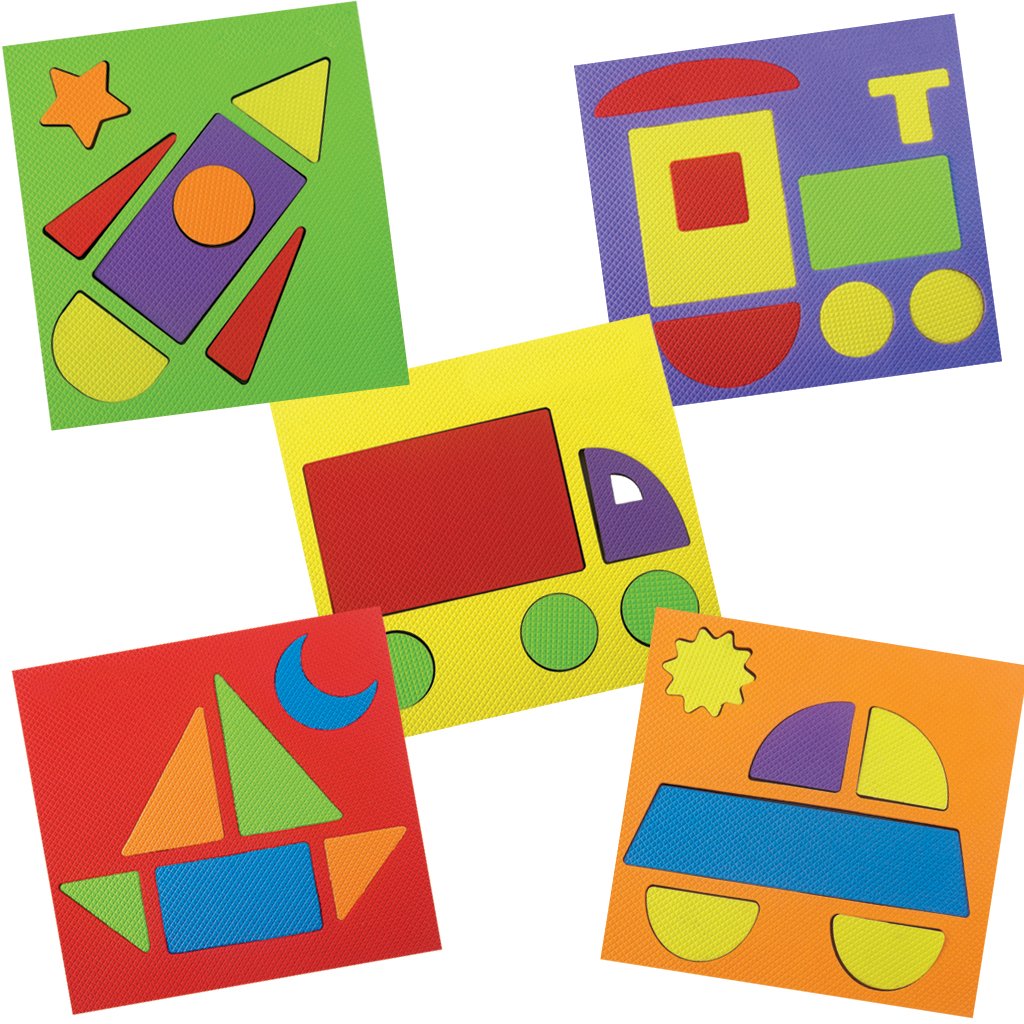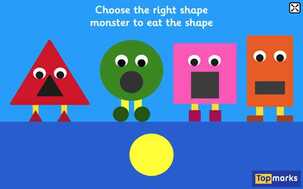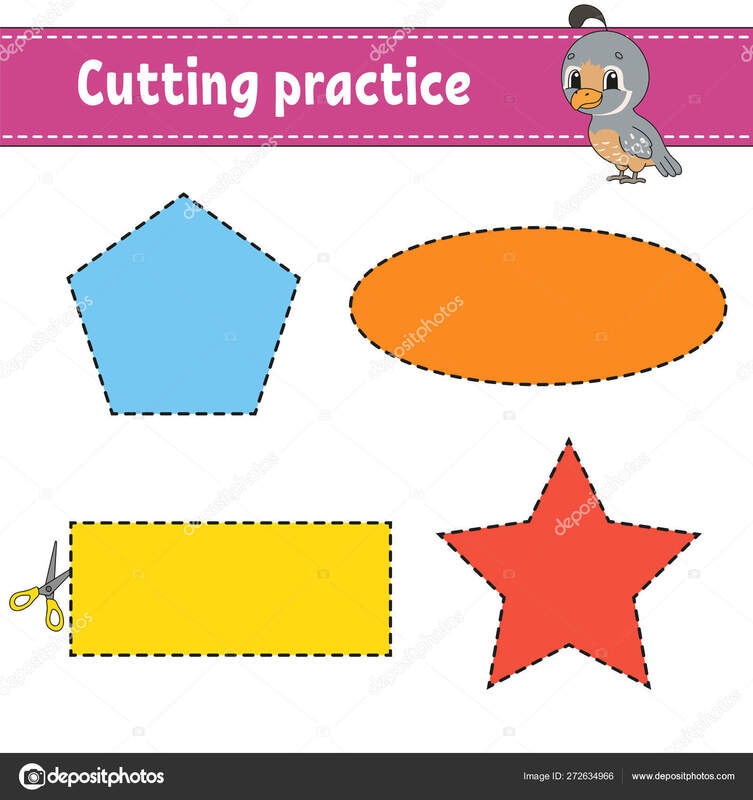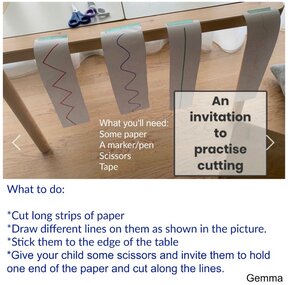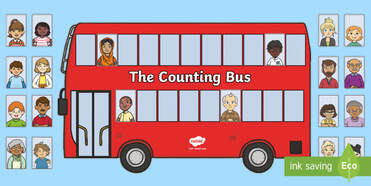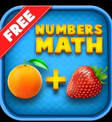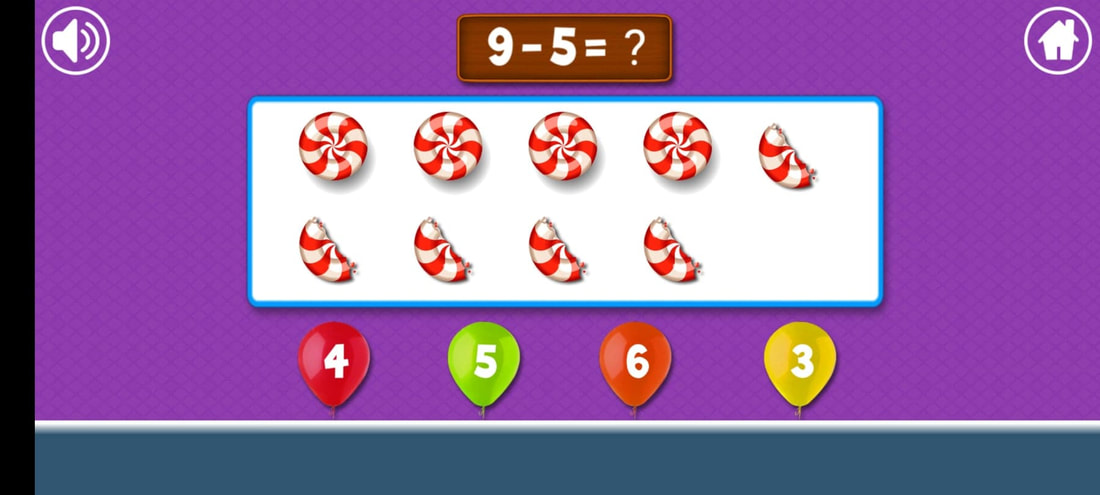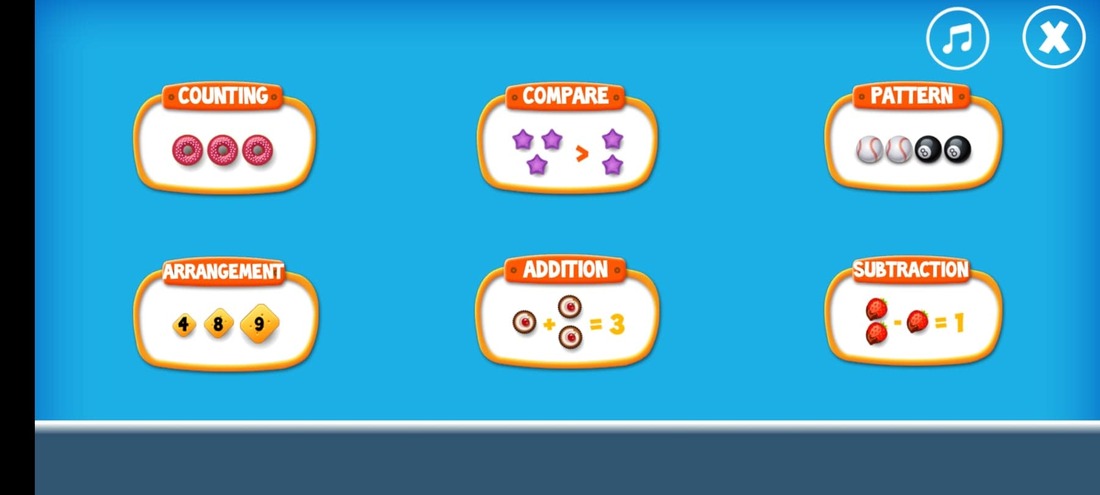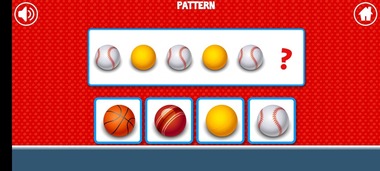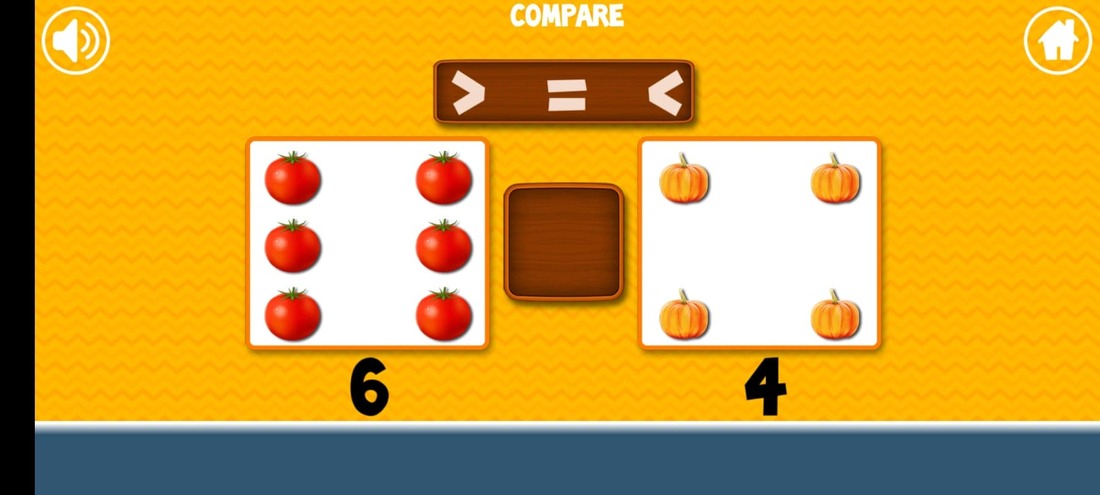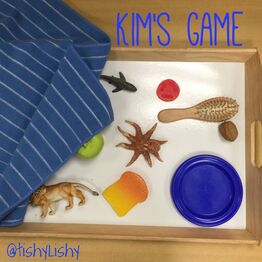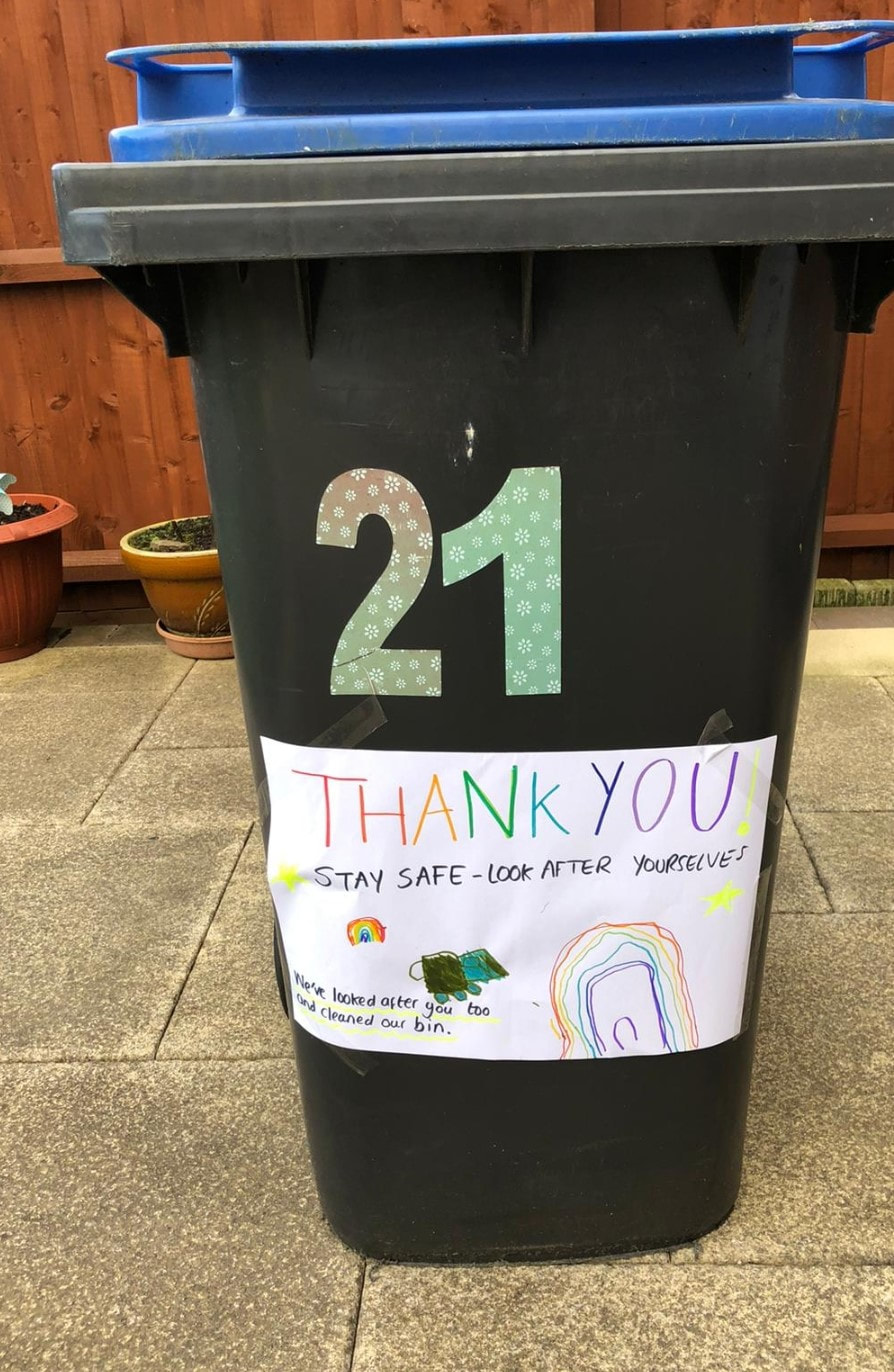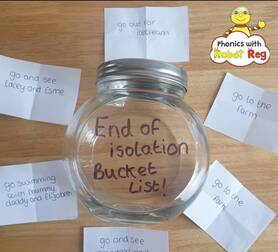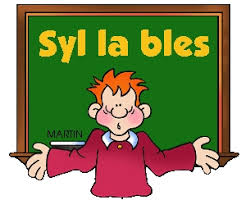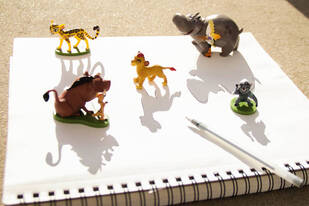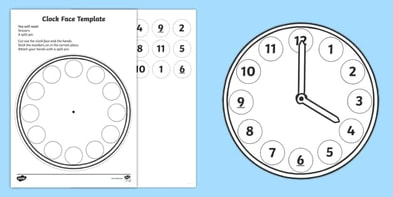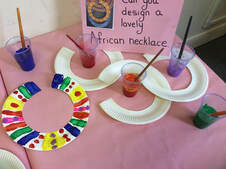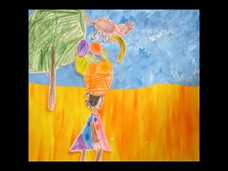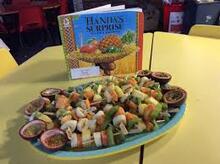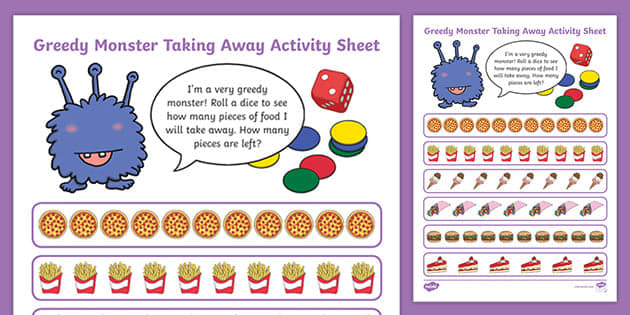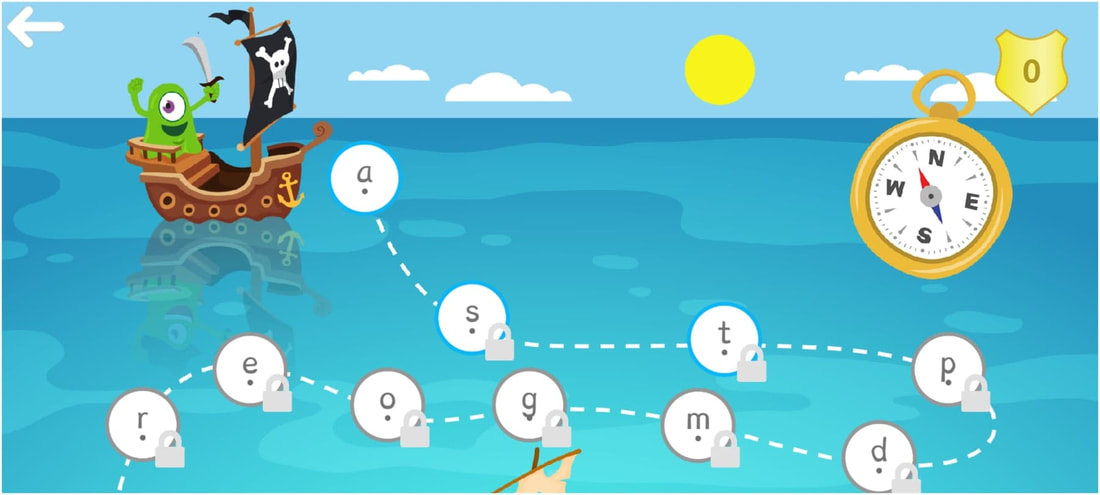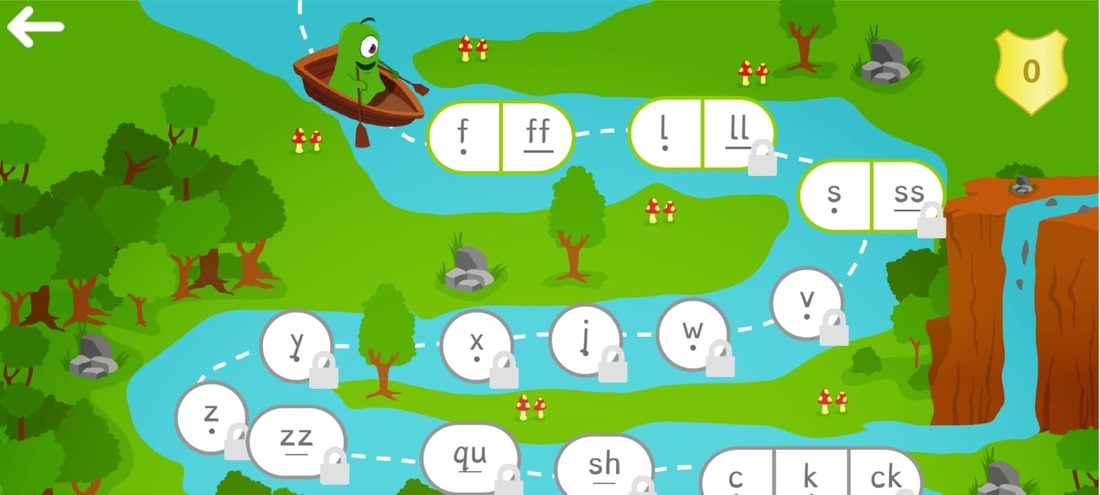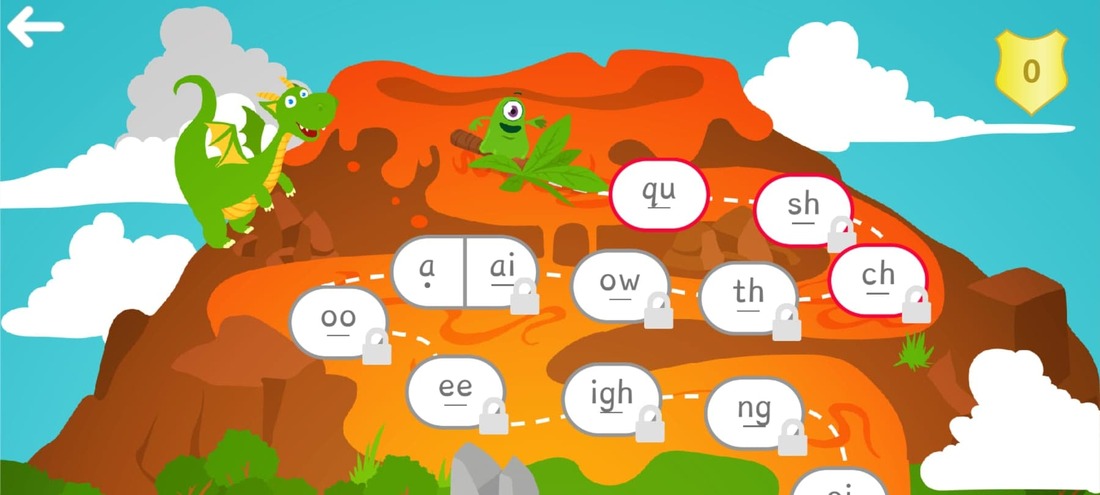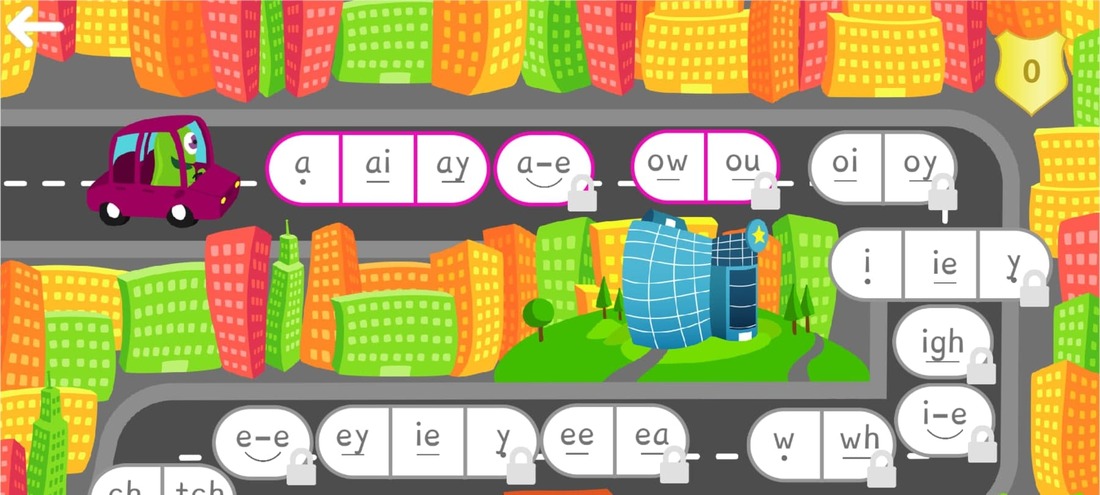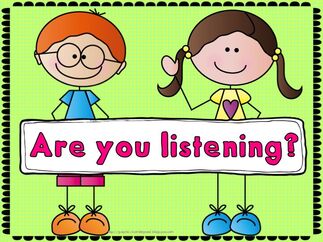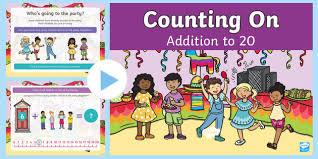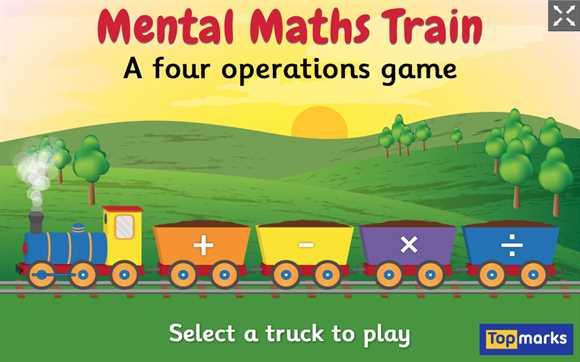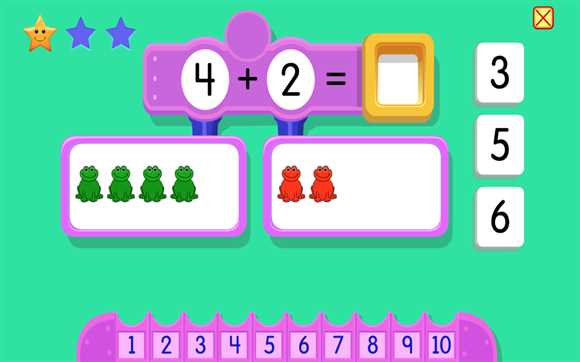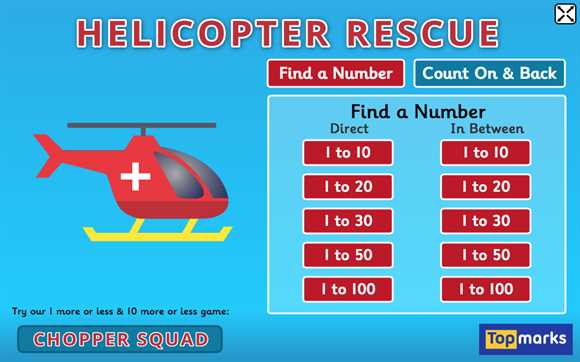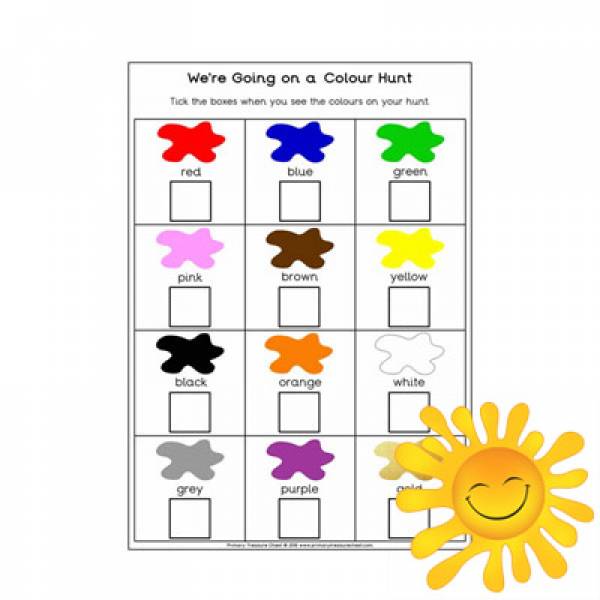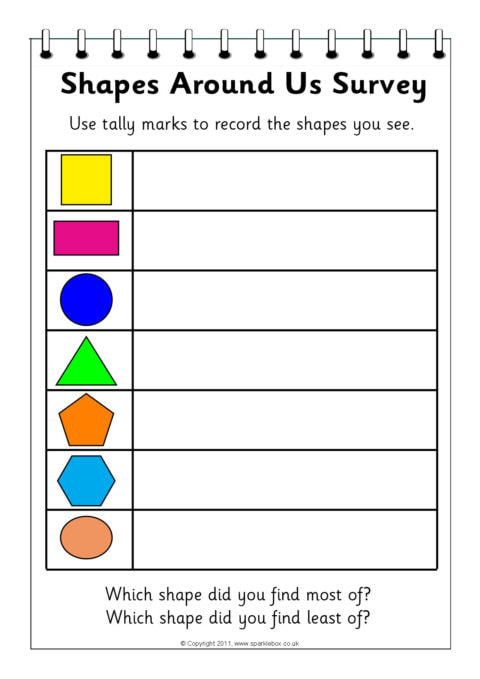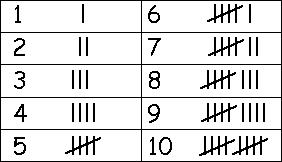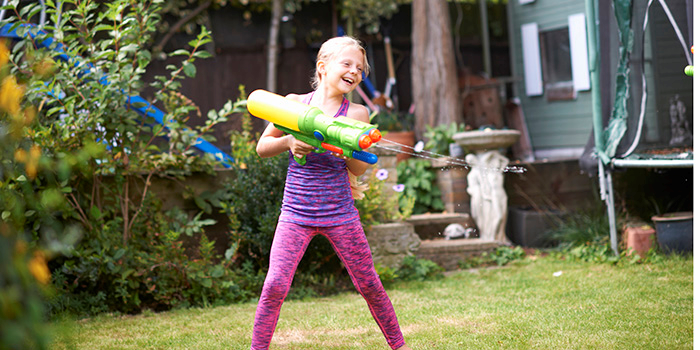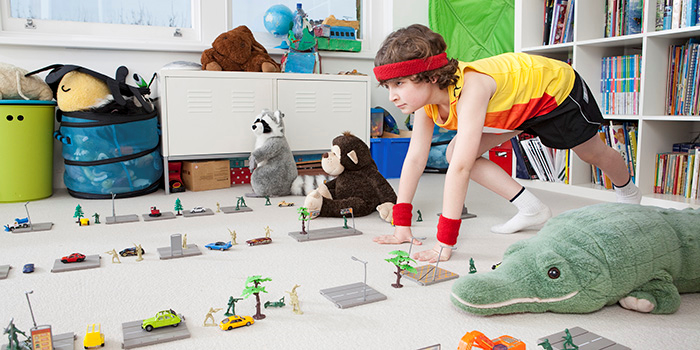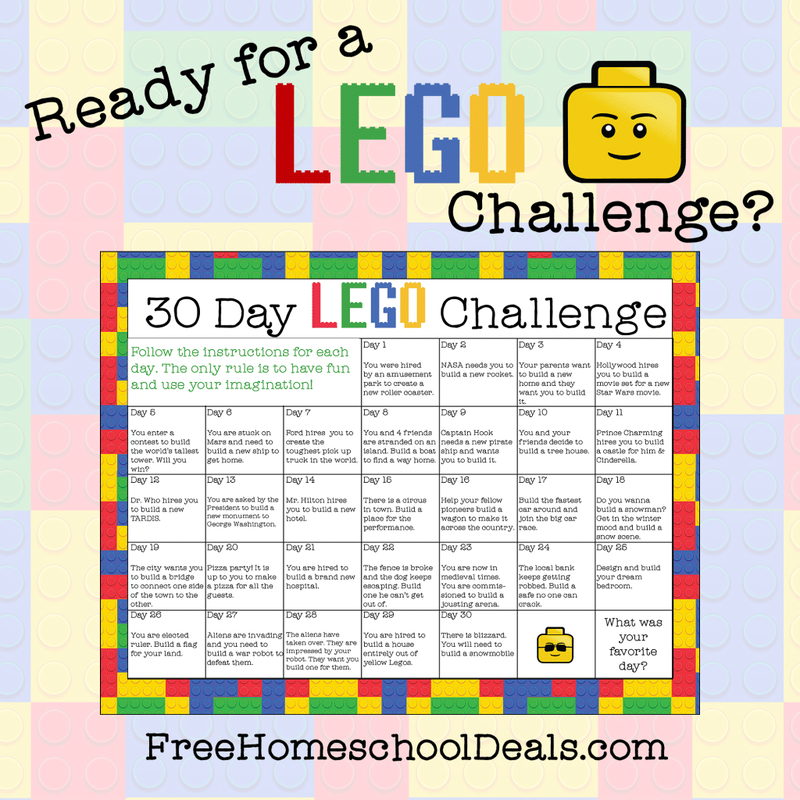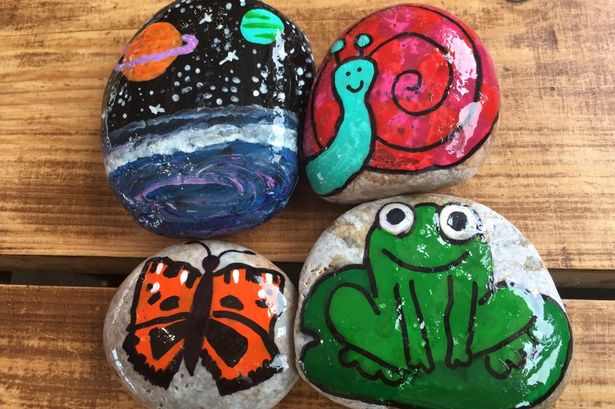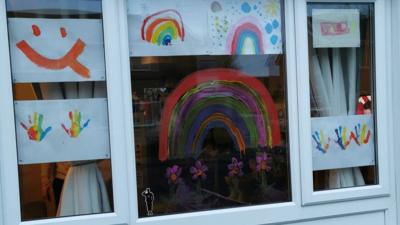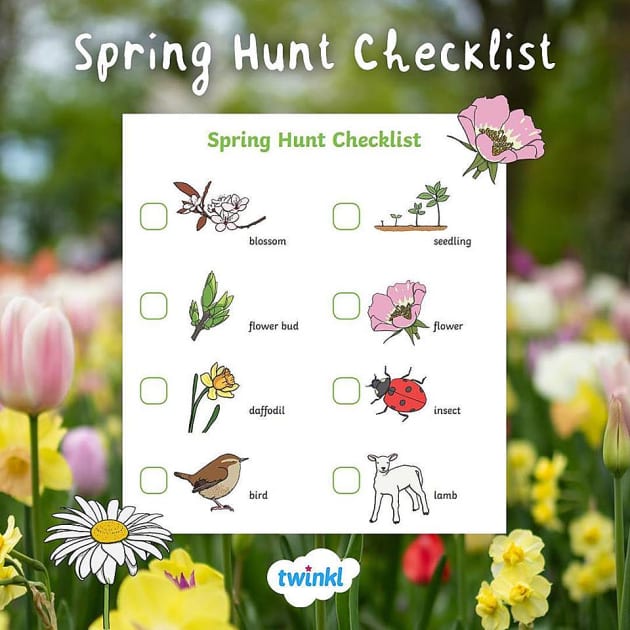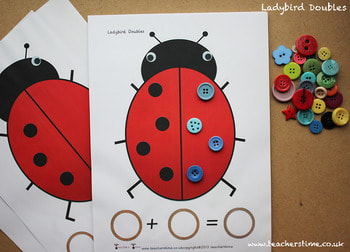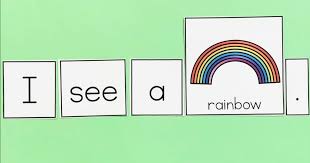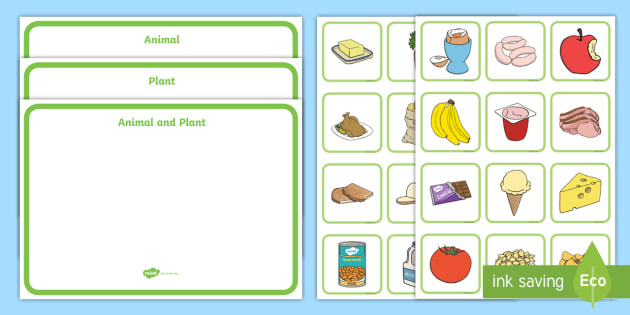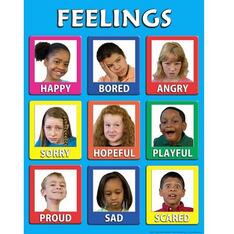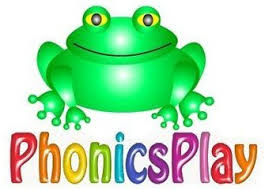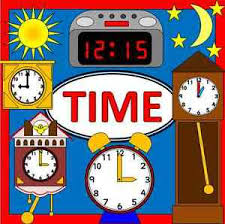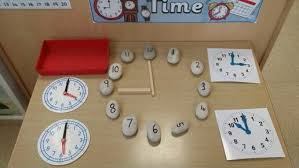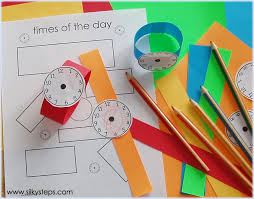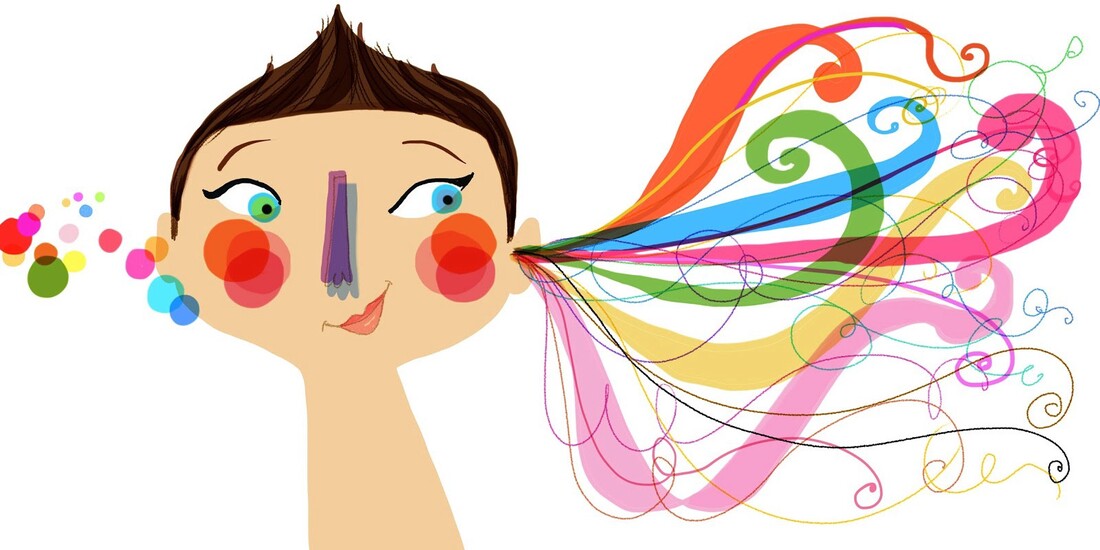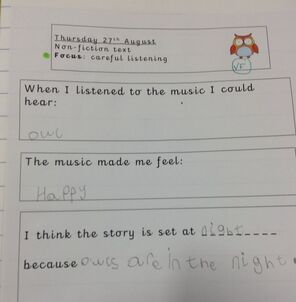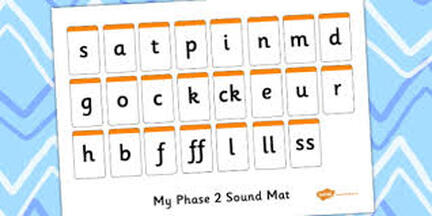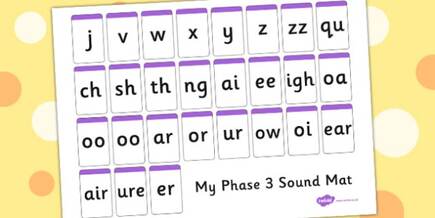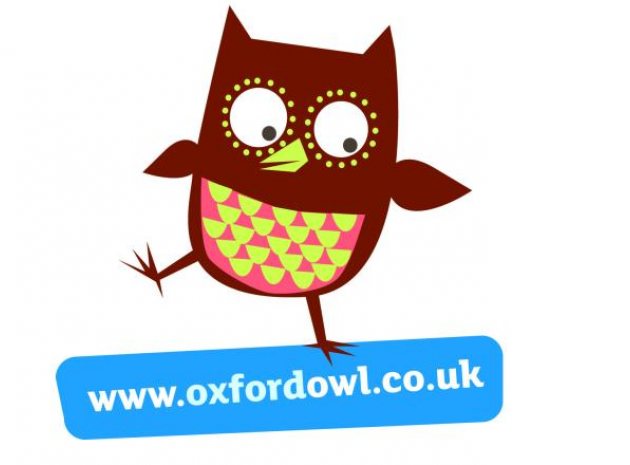Remote learning: EYFS - Mrs Dryden email: [email protected]
Hello Foundation Stage children and parents.
This page has all the activities and ideas of things to do at home up to and including Friday 1st May. Newer content can be found on my other webpage - click on this link to gain access.
Mr D's Friday stories can now be found here.
All activities are optional and can be completed at your leisure.
Please continue to use Tapestry to share your photographs so I can see how you've been keeping busy.
We hope you have enjoyed a chocolate-fuelled, sunshiney and peaceful Easter break.
I shall continue to upload activity ideas, video clips, games and other suggestions on here three times a week. Thank you to all of the fabulous photographs you have added to Tapestry...please keep them coming!
We have been linking your activities and learning to the EYFS curriculum as additional evidence for your child's learning journey...so thank you!
Friday 1st May 2020
Literacy - writing
Objective: children write simple sentences that can be read by themselves and others.
I have seen some fantastic writing this week from you - well done Foundation. You are making me feel really proud!
As a final writing task for the week, I'd like you to have a go at writing some sentences beginning with...
At night time...
So you could tell me...
* what happens at night time in the sky (moon and stars)
* about nocturnal animals and why they come out at night
* why fireworks are saved for night time
* what cars and cyclists need to do when out at night time
* how it feels to be out at night time
* how it feels to camp out at night time
I'd like you to include these things in your writing today...
* a capital letter at the star of your sentences
* finger spaces after every word
* a full stop at the end of each sentence
* connectives such as and and because
* adjectives to describe e.g. the silent owl swoops down to catch a mouse OR the bright fireworks light up the dark sky.
As a final writing task for the week, I'd like you to have a go at writing some sentences beginning with...
At night time...
So you could tell me...
* what happens at night time in the sky (moon and stars)
* about nocturnal animals and why they come out at night
* why fireworks are saved for night time
* what cars and cyclists need to do when out at night time
* how it feels to be out at night time
* how it feels to camp out at night time
I'd like you to include these things in your writing today...
* a capital letter at the star of your sentences
* finger spaces after every word
* a full stop at the end of each sentence
* connectives such as and and because
* adjectives to describe e.g. the silent owl swoops down to catch a mouse OR the bright fireworks light up the dark sky.
Friday 1st May 2020
Maths - Number
Objective: Children use objects and quantities to subtract single-digit numbers.
***Some children may be ready to subtract with 2digit numbers to 20***
You've worked really hard on your subtraction this week Foundation so well done.
Here are some challenges for you.
Each word problem requires you to do a take away. I'd like you to have a go at writing the number sentence using the - and = signs and the use your cubes, number line or other objects to calculate the answers.
***The pictures on the cards do not necessarily match the numbers in the questions!***
Here are some challenges for you.
Each word problem requires you to do a take away. I'd like you to have a go at writing the number sentence using the - and = signs and the use your cubes, number line or other objects to calculate the answers.
***The pictures on the cards do not necessarily match the numbers in the questions!***
Friday 1st May 2020
UTW - People & Communities
Objective: children talk about past and present events.
Communication & Language - speaking
Objective: children use past, present and future forms accurately.
For this challenge I'd like you just to talk!
Grown-ups if you could maybe dig out some old photographs of the children when they were younger or when you visited somewhere or someone to start a discussion.
If you could use vocabulary such as...
last year (e.g. do you remember when we went to the beach last year?)
yesterday (what did you most enjoy about yesterday?)
tomorrow (tomorrow we will have beans on toast for tea)
last week / next week
etc etc.
Just introducing the children to time -related vocabulary helps them to begin to use and understand these words.
Children often confuse yesterday and tomorrow as well as lacking understanding in the length of time - a week, a month, a year.
Grown-ups if you could maybe dig out some old photographs of the children when they were younger or when you visited somewhere or someone to start a discussion.
If you could use vocabulary such as...
last year (e.g. do you remember when we went to the beach last year?)
yesterday (what did you most enjoy about yesterday?)
tomorrow (tomorrow we will have beans on toast for tea)
last week / next week
etc etc.
Just introducing the children to time -related vocabulary helps them to begin to use and understand these words.
Children often confuse yesterday and tomorrow as well as lacking understanding in the length of time - a week, a month, a year.
|
1. Who am I?
I live underground in a den. I have a bushy tail. My babies are called cubs. I rhyme with box. |
2. Who am I?
I roll into a ball when I’m afraid. I’m covered in spikes. I snuffle when searching for food. |
3. Who am I?
I hang upside down when sleeping. I can hear things very well but not see them very well. I can fly. I rhyme with cat. |
Did you manage to guess them all?
Grown-ups...answers.... 1. fox 2. hedgehog 3. bat
You could have a go at writing clues of your own for a family member to guess.
Grown-ups...answers.... 1. fox 2. hedgehog 3. bat
You could have a go at writing clues of your own for a family member to guess.
Wednesday 29th April 2020
Maths - number
Objective: Children use objects and quantities to subtract single-digit numbers.
***Some children may be ready to subtract with 2digit numbers to 20***
Look at the example of how to solve these missing number problems.
Circle the first number in the number sentence and the last number. Jump back from the large number to the smaller number.
The missing number is how many jumps you did.
Have a go at the problems below...
Circle the first number in the number sentence and the last number. Jump back from the large number to the smaller number.
The missing number is how many jumps you did.
Have a go at the problems below...
Your browser does not support viewing this document. Click here to download the document.
Monday 27th April 2020
UTW - The World Objective: Children make observations of animals.
|
I've seen some fabulous work already this week on our theme of Nocturnal Animals - well done Foundation!
I've found a fabulous website all about owls - it has some super videos for you to watch as well as interesting owl facts and come printable colouring pages too. I'd love to see (via Tapestry) and hear what you have learnt about owls. |
Wednesday 29th April 2020
Literacy - writing
Objectives: Children write simple sentences.
Children spell some words correctly and some that are phonetically plausible.
|
Elsie has given me an idea for you all to try. Elsie has created her own fact file about nocturnal animals. I am so impressed with her hard work and with this super idea that I'd like you all to have a go too.
A fact file is a booklet or a list or an information page full of facts (real and true information). It can include pictures and diagrams too to add more information. I love this detailed, labelled picture------------------------------------> I'd like you to choose a nocturnal animal (possibly an owl using the amazing website above) and tell me as much as you can about that animal. I want you to blow my socks off with your knowledge! Send my some photographs of your amazing work via Tapestry for me to see. |
|
I'd like you to use the Phonics Play Comics website again for today's reading activity. (link below). I've found a comic for you to read about camping - a great outdoor, night time activity! Have you ever been camping before? What sounds did you hear at night time? Did you hear any nocturnal animals I wonder?
Read the comic strip by carefully sounding out the words and reading the sentences. Once you have finished, try answering the questions below about the story... Q1. What is the story about? Q2. Why does he need help pumping up the beds? Q3. Why should you not jump on the camp beds? Q4. What did he think he could hear? Q5. How did the tent blow away? Q6. In what way was the tent damaged? Q7. What did they most enjoy about camping? |
This activity is simply called the Alphabet Game. It can be played wherever you are and can be adapted to all sorts of themes.
The idea is nice and simple; you think of one word for each letter of the alphabet.
You can pick a theme such as people's names, food, animals, objects in the room, drinks etc.
So if I picked food as a theme I might have apple, banana, carrot, donut, eggs, fish fingers etc etc.
This can be played verbally or can be written down as a list.
I would like you to have a go at playing the Alphabet Game (on your own or with your family) with the theme of animals. I'd also like you to write down you answers using your super phonic knowledge to support your spelling.
I'd also like you to score some points. So for each animal you write down for each letter you gain a point, if you can think of more than one animal for some of the letters then you get extra points.
I wonder what your high score will be?
I've started you off.....enjoy!
A – ape ant
B – butterfly bat badger
C – cat cheetah
etc
The idea is nice and simple; you think of one word for each letter of the alphabet.
You can pick a theme such as people's names, food, animals, objects in the room, drinks etc.
So if I picked food as a theme I might have apple, banana, carrot, donut, eggs, fish fingers etc etc.
This can be played verbally or can be written down as a list.
I would like you to have a go at playing the Alphabet Game (on your own or with your family) with the theme of animals. I'd also like you to write down you answers using your super phonic knowledge to support your spelling.
I'd also like you to score some points. So for each animal you write down for each letter you gain a point, if you can think of more than one animal for some of the letters then you get extra points.
I wonder what your high score will be?
I've started you off.....enjoy!
A – ape ant
B – butterfly bat badger
C – cat cheetah
etc
Wednesday 29th April 2020
|
|
Monday 27th April 2020
Listening & Attention
Objective: Children can listen attentively in a range of situations.
|
Check out Mr Dunn's reading of Owl Babies below
(filmed from his tent)! You can also find an animated version of the story here --------------> When watching the video clip, try to answer these questions... Where is the story happening? What might it feel like to be there? What time of the day is it? What sounds can you hear? Who are the characters of the story? How do the characters' feelings change through the story? How would you try to reassure the owls? Have you every felt afraid or worried? |
|
I think you'll enjoy this activity, it's called code-breaking.
The idea is that you create a simple picture for each letter of the alphabet and use these to read and wrote words.
Task 1:
Create the symbols/pictures for your alphabet (see the photograph below for some ideas).
Task 2:
Ask a grown-up to write some words in code for you to work out.
Task 3:
You write some words in code for your grown-ups to work out.
This task is great fun as it's open ended and involves reading, writing and spelling!
We had fun at home with this task, in code we built the names of friends and family, we built animal names (good link to our topic this term), and then we built silly words and alien words!
The idea is that you create a simple picture for each letter of the alphabet and use these to read and wrote words.
Task 1:
Create the symbols/pictures for your alphabet (see the photograph below for some ideas).
Task 2:
Ask a grown-up to write some words in code for you to work out.
Task 3:
You write some words in code for your grown-ups to work out.
This task is great fun as it's open ended and involves reading, writing and spelling!
We had fun at home with this task, in code we built the names of friends and family, we built animal names (good link to our topic this term), and then we built silly words and alien words!
Monday 27th April 2020
UTW - The World Objective: Children make observations of animals.
Literacy - Writing Objective: Children write simple sentences.
Nocturnal animals are those that are awake at night time and asleep during the day time.
Understand The World (UTW) - Use the powerpoint below to find out more about nocturnal animals.
Watch the video clip of an owl in the daytime!
Literacy - Writing - Draw one of the nocturnal animals you have found out about and write a sentence about it. You could do
more than one if you are feeling super clever today!
Understand The World (UTW) - Use the powerpoint below to find out more about nocturnal animals.
Watch the video clip of an owl in the daytime!
Literacy - Writing - Draw one of the nocturnal animals you have found out about and write a sentence about it. You could do
more than one if you are feeling super clever today!
| |||||||
Monday 27th April 2020
Phonics
Objective: Children use their phonic knowledge to read and write words.
|
Use the video to practise your phase 3 sounds.
Firstly have a go with the sound on and try my turn, your turn then have a go with the sound off and see how many sounds you get right on your own. You could now practice writing the sounds down and spelling some words with them. You could include some of these words in your code breaking activity. |
|
|
Try this game on Phonics Play to practice reading words with Phase 3 digraphs and trigraphs.
|
|
This is a free resource from Twinkl.
It allows children to practice their Phase 3 digraphs and trigraphs through a fun bingo game. |
Monday 27th April 2020
Maths - Number
Objective: Children use objects and quantities to subtract single-digit numbers.
***Some children may be ready to subtract with 2digit numbers to 20***
|
This week we are focusing on subtraction (or take away).
In the Foundation stage we use a few different ways of working out the solutions to subtraction problems. Method one: Take away This method uses practical objects such as cubes, counters, buttons, paste etc. For a problem such as 6 - 4 = we would carefully count out 6 objects and then take 4 of them away. The solution is how many objects remain. Method two: Counting back This method uses a number line to 10 (or 20) and a pencil. For a problem such as 6 - 4 = we would draw a circle around the number 6 on the number line and draw 4 jumps backwards, landing on the previous number each time. The solution is the final number we land on. Children could jump with their finger of they feel confident. This method could also be done mentally with the use of fingers to support. The number 6 would be put into our heads (we tap our forehead to show it's in there) and we would hold up 4 fingers. We would count back as we folded down a finger at a time until all 4 fingers were folded down. |
|
This game is great and allows us to practice some subtracting!
Click on the yellow trailer to play the subtraction game. From the menu select either Up to 10 or Up to 20 (see arrows on photographs). Children may use their number line from their home learning pack or some objects to help them solve each subtraction problem. |
Monday 27th April 2020
Physical Development
Objective: Children move confidently in a range of ways.
|
I have seen lots of great examples of these online and Mia in our class made a fabulous one along her street...an obstacle course.
Using just chalk you could draw a trail along your street or in your garden and add actions and activities along the way. You could add... jumps, hops, wiggles, star jumps, kicks, dancing etc etc! This will be lots of fun, a great way to keep active and a nice chance to enjoy the fresh air outside. Click on the image for a closer look. |
Some other fun ideas to try with our animal theme. Enjoy!
Friday 24th April 2020
|
|
I'd like the children to explore the world a little!
I have a link to an amazing website that allows you to explore the globe. -------------------------------------> (click on the photorealistic globe). Ask the children some of these questions to get them thinking... * What are the blue parts? * What are the green and brown parts? * Why are the top and bottom of the Earth white? See if the children can find the United Kingdom and any other places they have visited. Show them the United Kingdom, discuss the size of our country compared to other countries and the fact that we are surrounded by water. |
|
Show the children the world map - tell them that this is how Earth would look if we were to flatten it out.
Locate the United Kingdom on this map. Ask the children... * How many countries do you think there are in the world? (Answer...196) * Which country is the biggest? *Which country do you think is the smallest? * How many continents are there? (Answer ...7) |
|
Show the children this map ------------------> Can you remember how many continents there are in the world? Count them on the map to check. Can you find the United Kingdom on this map and work out which continent we are in? Which continent looks the biggest? |
|
Search for monkeys, elephants, snakes, lions, tigers, frogs, crocodiles and more!
|
When you go to the zoo, all of the animals you see come from different countries from around the world.
Use this map to learn more about where different animals come from. See if you can find some of the animals from our story, Monkey Puzzle, on the map and work out which continent they come from. |
Friday 24th April 2020
|
I've discovered a new part of Phonics Play...Phonics Play Comics.
These are great little comics created for children to apply their phonic knowledge and to practice reading words with digraphs and trigraphs in. They are split into phonics phases to match our current level of learning.
I'd like you to click on 'Comics' in a green spike at the top. Then scroll down to 'Phase 3 Comics'. Finally, click on 'Let's Go'.
This will open the comic for you and your child to read together.
These are great little comics created for children to apply their phonic knowledge and to practice reading words with digraphs and trigraphs in. They are split into phonics phases to match our current level of learning.
I'd like you to click on 'Comics' in a green spike at the top. Then scroll down to 'Phase 3 Comics'. Finally, click on 'Let's Go'.
This will open the comic for you and your child to read together.
|
Now try answering these questions about the comic you have read.
Phase 3 - Let's Go Q1. Why does Obb have his umbrella up? Q2. What vehicle is Bob driving? Q3. Where is Bob waiting? Q4. Where do they go in the sub? Q5. What colour tail does the fish have? Q6. Why do you think they leave when they discover it's an eel? |
|
You've been working hard to recognise coins and to make and count different amounts.
Now I'd like you to have a go at subtracting with money. I have 10p to spend at the supermarket. Look at the number sentences below to work out how much change I will get if I pay for the items in my basket. You could use real 1p coins or your coloured cubes to help you when taking away. |
I'm going to buy an apple. I'm going to buy some watermelon.
10p - 4p = 10p - 7p =
I'm going to buy a plum. I'm going to buy a banana.
10p - 10p = 10p - 2p =
10p - 4p = 10p - 7p =
I'm going to buy a plum. I'm going to buy a banana.
10p - 10p = 10p - 2p =
Wednesday 22nd April 2020
|
Wednesday 22nd April 2020
Expressive Arts & Design
Objective: Children sing songs, make music and dance.
|
|
Monkey Puzzle is written by Julia Donaldson and illustrated by Axel Scheffler. Watch this video of Julia Donaldson singing (and signing) the Monkey Puzzle song. I hope you enjoy it! Maybe you could make u your own monkey song and dance - I'd love to see it! |
Wednesday 22nd April 2020
|
|
|
|
Wednesday 22nd April 2020
|
E.g. The little chick was happy. I like seeing my sister when I feel sad.
|
Try this tricky word game.
Yu will need a dice and some counters (a different colour for each player). (You could write out the words if you are unable to print them out, or play on the screen). Take it in turns to roll the dice and read a word from underneath that number on the grid. if you read it correctly you can place your coloured counter on it. The winner is the person with the most coloured counters on the grid when all words have been read. |
Your browser does not support viewing this document. Click here to download the document.
|
Wednesday 22nd April 2020
|
|
At school, we would be setting up a shop in our role play area to allow children to explore money by buying items and paying for them with real coins. You may be able to set one of these up in your own home. You could use toys or tins of food and add price labels. Your Mummy, Daddy and siblings could visit your shop to buy some things.
|
Monday 20th April 2020
|
|
|
Click on the video to the left to hear the story read aloud
(I wanted to read it aloud myself but I don't seem to have a copy of this story at home...sorry!) Today and tomorrow I'd like you to find out about elephants! What can you find out / learn about these magnificent, enormous creatures? Maybe you could draw an elephant and write some facts around it. Or you could create a fact file. |
We have been working really hard at school learning how to write 3 star sentences - these include a capital letter at the beginning, finger spaces after each word and a full stop at the end. I'd like to challenge the children to write a 4 star sentence and even a 5 star sentence! I've included some examples below.
Your browser does not support viewing this document. Click here to download the document.
Perhaps you could draw a picture of some jungle animals and write some 5 star sentences about them. Or you could use the pictures from the story (see above) as inspiration for your sentences.
Monday 20th April 2020
|
|
Watch the video of trigraphs, do you know them all?
Try writing words that have these trigraphs in them and then reading them again to check they have all the sounds in them that they need. You could make up some alien words too!
Ideas: hair chair lair funfair hairbrush pushchair light night sight high flight manure picture cure pure
year beard fear near
Try writing words that have these trigraphs in them and then reading them again to check they have all the sounds in them that they need. You could make up some alien words too!
Ideas: hair chair lair funfair hairbrush pushchair light night sight high flight manure picture cure pure
year beard fear near
Monday 20th April 2020
|
|
Topmarks has some excellent money games allowing children to explore coins, recognise their value and then move on to making totals using combinations of the same and then different coins.
Friday 3rd April 2020
The end of the second week is upon us already! Today is our final webpage update until after the Easter holidays. However I will still check in with tapestry each week and may post some activity ideas on there if you are looking for something new to do or try.
Friday 3rd April 2020
|
Talking about shapes in everyday situations is a great way of helping children to regularly use and remember shape names and properties.
Some ideas:
* Try a shape hunt around your house - how many circles can you find (clock, lampshape, doorknob, cake, coaster etc).
* Play shape bingo
* Draw pictures using shapes or build models using shapes (cereal boxes, tubes, tubs etc)
* Learn how to draw 3D shapes or make them using a net (see links below for resources)
Some ideas:
* Try a shape hunt around your house - how many circles can you find (clock, lampshape, doorknob, cake, coaster etc).
* Play shape bingo
* Draw pictures using shapes or build models using shapes (cereal boxes, tubes, tubs etc)
* Learn how to draw 3D shapes or make them using a net (see links below for resources)
Friday 3rd April 2020
Phonics
Objective:
Children use phonic knowledge to read and write words.
|
Use the slideshow (link to the right) to revisit and practise the sounds we have learnt this year.
|
| ||||||
Wednesday 1st April 2020
Welcome to April! You're all doing amazingly with the new challenge of home learning, let's keep going! We can do this. We are all in this together.
Try drawing some wobbly, zigzag and straight lines for your chid to cut along. You could also draw simple shapes for them to cut out too. Children will develop their hand muscles and coordination with this activity. They should use scissors with their thumb and for finger in one hand.
To continue this week's theme of subtracting, I'd like children to have a go at counting back.
So if they were solving the problem of 8 - 5, they would put 8 in their head and count back 5 numbers using their fingers for support.
We like to put both addition and subtraction problems into a context for the children so you may tell them a little story like 8 people were on the bus, when the bus stopped at the park, 5 people got off, how many people are left on the bus?
Your child could draw a bus to help them work through problems like these but we would encourage mental calculations using their brains their fingers.
So if they were solving the problem of 8 - 5, they would put 8 in their head and count back 5 numbers using their fingers for support.
We like to put both addition and subtraction problems into a context for the children so you may tell them a little story like 8 people were on the bus, when the bus stopped at the park, 5 people got off, how many people are left on the bus?
Your child could draw a bus to help them work through problems like these but we would encourage mental calculations using their brains their fingers.
Counting songs are great for understanding subtraction and counting back too. |
|
I recommend this maths app for practising lots of different maths skills...
Kim's Game is great for concentration and memory. Children are shown a tray of items (this can be anything!) for a minute or two, it is then covered with a towel or cloth. An item is then removed and hidden. The next time your child looks at the tray, they will have to work out which item was removed.
Challenge could be added by...
* removing two items
* having a tray of numbers - hide a number, which number is missing?
* having only one colour - everything on the tray is red for example - more concentration needed!
Challenge could be added by...
* removing two items
* having a tray of numbers - hide a number, which number is missing?
* having only one colour - everything on the tray is red for example - more concentration needed!
Wednesday 1st April 2020
|
Wednesday 1st April 2020
|
A big part of our Phase 4 phonics teaching centres around decoding and reading 2-syllable words. I've listed some below for you to have a go at reading. We often ask the children to draw a picture next to each word to prove they can read it and know what it says.
If you were to copy these into your child's workbook they could add a picture next to each word.
If you were to copy these into your child's workbook they could add a picture next to each word.
Your browser does not support viewing this document. Click here to download the document.
Monday 30th March 2020
Welcome back after the weekend, I hope it's been a busy yet relaxing one for you all. Thank you for yet more wonderful photographs of your happy, busy children...it's so great to see them even if it is just through photographs :)
Fingers crossed the sun will shine again for us this week. As soon as it does, line up some toys (dinosaurs, teddies, dolls, cars, figures) and try to draw around their shadow onto paper. As an extension, leave them for a few hours and dry around their shadows again - what do you notice? Why are their shadows in a different place now? z great way to practise pencil control as well as learn more about our world - the sun and how/when it moves!
Monday 30th March 2020
|
To continue your learning of time, I thought it might be nice for you to make a model clock to use when showing and reading different times at o'clock and half past the hour. A paper plate could be used and numbers written on or this template could be printed from Twinkl.
Monday 30th March 2020
|
|
If we were at school this week, we would be studying Handa's Surprise as it allows us to look at a different story setting and introduces us to a wide variety of fruits - some we may never have heard of - fitting nicely with our growing topic.
Watch the video clip of Handa's surprise and see if you can retell the story to a sibling or adult - can you remember the order in which the fruits were taken and who took them?
Watch the video clip of Handa's surprise and see if you can retell the story to a sibling or adult - can you remember the order in which the fruits were taken and who took them?
Some follow-up ideas to the story:
*Retell the story using pictures with labels.
*Write the story in simple sentences.
*Make up your own version of the story by changing the fruits and animals.
I'd love to see your stories on Tapestry!
Then you could try...
* Making some fruit kebabs or a fruit salad.
* Making an African necklace for Handa.
* Collage a picture from the story.
Monday 30th March 2020
|
This week I'd like you to have a go at subtraction (taking away). This is best done using your cubes or other objects as handling and seeing the maths brings it to life much more effectively than just a worksheet. I would set some counters on the table, ask your child to count them. Now ask your child to take some away (e.g. take away 3). They then need to count how many are left. Talk through what you did. E.g. we have 7 cubes, we toom away 3 and we were left with 4. Consider writing this on the whiteboard for your child to see it written as a number sentence
(7 - 3 = 4) Repeat with other numbers.
When your child is ready, they could attempt something like the Greedy Monster Taking Away sheet on Twinkl.
(7 - 3 = 4) Repeat with other numbers.
When your child is ready, they could attempt something like the Greedy Monster Taking Away sheet on Twinkl.
There is an app called 'Read with Phonics' that is brilliant! It is full of games and tasks for your child to recap, practise and apply their phonic knowledge. I can highly recommend it. Each island has a different set of letters, digraphs (2 letters, 1 sound) and trigraphs (3 letters, 1 sound) for your child to look at, listen to and use to read and build words. Really easy to use and a great resource to support your child with phonics.
** Don't worry, the padlocks disappear as you complete the level before**
** Don't worry, the padlocks disappear as you complete the level before**
Friday 27th March 2020
Well done everyone, week one of being busy bees at home is almost over.
We are missing you very much and thinking about you everyday. We love seeing your photographs on Tapestry; you've been doing some amazing things!
Here are a few games requiring children to listen carefully and follow instructions.
Introduce colours gradually so as not to complicate the game too soon.
Start simple but then add some challenge e.g. Mr Tumble says jump up and down 4 times / Batman says clap you hands and stamp you feet.
- Rainbow rules....each colour of the rainbow has a rule.
Introduce colours gradually so as not to complicate the game too soon.
- Simon says...listening carefully and following instructions
Start simple but then add some challenge e.g. Mr Tumble says jump up and down 4 times / Batman says clap you hands and stamp you feet.
- Follow the leader...you can lead or they can.
- Obstacle courses
Friday 27th March 2020
|
Practise adding two numbers together using a simple set up like the one below. Place some cubes or pebbles or smarties in the first two boxes and ask the children to count them altogether to work out the total amount.
Encourage children to then write the number sentence (e.g. 6 + 3 = ) that matches the problem they have just solved, this could be recorded in their work book. Challenge your child to add numbers together with totals up to 20 (e.g. 12 + 5 = ).
Encourage children to then write the number sentence (e.g. 6 + 3 = ) that matches the problem they have just solved, this could be recorded in their work book. Challenge your child to add numbers together with totals up to 20 (e.g. 12 + 5 = ).
Your browser does not support viewing this document. Click here to download the document.
Use these links to try out some addition games online.
Numicon Use your Numicon pieces to practise adding too.
Friday 27th March 2020
Physical Development - Health & Self-care
Children understand that exercise contributes to good health.
Keeping active and enjoying regular exercise not only makes your body feel good but can help with mental wellbeing too. Whilst out and about enjoying the fresh air and sunshine, you could try some of these ideas...
Search for colours, shapes or numbers around you and tick or tally every time you see them.
Wednesday 25th March 2020
Hello all - we hope you are well.
Here are some photographs of ideas that you could try...
Children are not required to recall doubles or halves but should be able to work them out. E.g. children should split 8 counters into two groups of 4 when finding half of 8, and make two groups of 3 when working out double 3. You could draw a line the middle of a paper plate or draw / print a ladybird like in the picture to help support solving these types of problems. Counters / pebbles / smarties are great resources to use when doubling and halving.
|
|
| ||||||||||||
When reading with the children we always think about the words making sense. We encourage children to reread a word or sentence if it does not make sense. This also applies when writing sentences - often their wonderfully imaginative sentences that are created verbally don't always make sense when written down!
To practise this skill of checking reading and writing for meaning, I'd like the children to unscramble the sentences. On the page below are some examples that you could try. If possible, copy the words onto small pieces of paper (one word per piece), jumble them up and ask the children to order them and the stick them down in the correct order, using their super reading skills to check it makes sense. The children should then have a go at copying the sentence down into their books using their neat handwriting and remmbering a capital letter, finger spaces and a full stop.
To practise this skill of checking reading and writing for meaning, I'd like the children to unscramble the sentences. On the page below are some examples that you could try. If possible, copy the words onto small pieces of paper (one word per piece), jumble them up and ask the children to order them and the stick them down in the correct order, using their super reading skills to check it makes sense. The children should then have a go at copying the sentence down into their books using their neat handwriting and remmbering a capital letter, finger spaces and a full stop.
Your browser does not support viewing this document. Click here to download the document.
As part of our growing topic we were going to move onto growing food and food origins. I would like the children to use the resources below to learn about where our food comes from. Children should learn about what grows in the ground, what grows on trees and the types of food we get from animals. Children could draw a picture of a farm and label the types of foods we get from different sources (carrots from the ground, ham from pigs, eggs from chickens etc) or they could produce an information booklet or poster showing what they have found out. Use the PowerPoint below for some information.
|
| |||||||||||||
Understanding our feelings and how we manage them is a big part of our daily life at school. We tak about what is happening, how it's making us feel and how we can manage our response. I've found an emotion game for you and your child to have a go at to provide some opportunities to talk about how they are feeling and how others might feel too.
Your child's wellbeing and happiness is of utmost importance to us at all times, we understand this time will affect their feelings and may make them feel worried or anxious. Talking freely about emotions may help them to feel more relaxed and feel able to share their feelings with you.
Your child's wellbeing and happiness is of utmost importance to us at all times, we understand this time will affect their feelings and may make them feel worried or anxious. Talking freely about emotions may help them to feel more relaxed and feel able to share their feelings with you.
|
| ||||||
Try the games below to practise and apply phase 4 phonics knowledge.
Select Phase 4 on the left hand side menu. Choose a game to play.
Obb and Bob is very popular with the children but there are lots of great games for the children to play, all requiring them to use their phase 4 phonic knowledge.
Select Phase 4 on the left hand side menu. Choose a game to play.
Obb and Bob is very popular with the children but there are lots of great games for the children to play, all requiring them to use their phase 4 phonic knowledge.
By the end of Foundation Stage children will need to be able to talk about the days of the week, months of the year and times of the day. We shall be teaching children to tell the time at o'clock and half past the hour. We will talk about the short hand (hour) and the long hand (minute).
Try this teaching clock to look at the numbers on the clock. Press 'reset' to start the time at 12 o'clock and add on '1 hour' to change the time. Ask children to read the time.
Try this teaching clock to look at the numbers on the clock. Press 'reset' to start the time at 12 o'clock and add on '1 hour' to change the time. Ask children to read the time.
Activity: make a clock face by placing stones where the numbers sound be. Use stick as the hands and move them around your clock to show different times at o'clock and half past the hour.
Activity: Draw and label a timetable of your day or a typical day at school. What do we do and when?
Activity: Draw and label a timetable of your day or a typical day at school. What do we do and when?
Try the listening game below, you need to match the two sounds together - you need to listen carefully!
The 'Guess the Sound' video clip is something we have used in school before, the children love guessing the sounds.
The 'Guess the Sound' video clip is something we have used in school before, the children love guessing the sounds.
Activity: Play 'Simon Says' and give your children instructions to follow...but only when Simon says!
Activity: Play a game of musical statues or musical bumps, children need to listen carefully to the music and respond when it stops.
Activity: Play a game of musical statues or musical bumps, children need to listen carefully to the music and respond when it stops.
Activity: write about fantasy situations like finding a pot of gold, growing a pair of wings or living under the sea! Developing your child's imagination allows them to explore possibilities and think outside the box.
Activity: write a letter to a friend or family member, try to ask them some questions and tell them something about you.
Activity: play a game such as the alphabet game (writing one word for every letter of the alphabet) or the alliteration game (writing silly sentences such as ten tiny toads or six slimy snakes).
Activity: write a letter to a friend or family member, try to ask them some questions and tell them something about you.
Activity: play a game such as the alphabet game (writing one word for every letter of the alphabet) or the alliteration game (writing silly sentences such as ten tiny toads or six slimy snakes).
There are LOADS of fabulous books to enjoy together on this free - to -use website.
Reading books and stories together is a great way to develop a love of reading as well as practising the reading skills we have busy learning since September. We always encourage children to talk about what's been read to ensure they have understood it. We often play word hunts - looking for tricky words or particular sounds in words ('who can find a word with 'ee' in it?' etc). Listening to adults read is a big part of learning how to be a good reader, as well as reading books for themselves.
Reading books and stories together is a great way to develop a love of reading as well as practising the reading skills we have busy learning since September. We always encourage children to talk about what's been read to ensure they have understood it. We often play word hunts - looking for tricky words or particular sounds in words ('who can find a word with 'ee' in it?' etc). Listening to adults read is a big part of learning how to be a good reader, as well as reading books for themselves.
